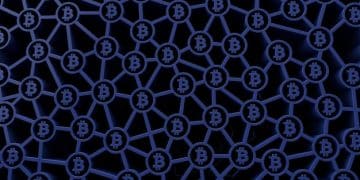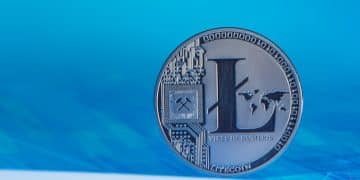Solana Wormhole Bridge: Transfer Assets with Minimal Fees

Solana’s Wormhole Bridge is a decentralized communication network facilitating the transfer of assets and data between Solana and other blockchains, enabling cross-chain interoperability with reduced transaction fees and enhanced efficiency.
Unlock seamless cross-chain asset transfers with Solana’s Wormhole Bridge: A Comprehensive Guide to Transferring Assets Between Blockchains with Minimal Fees. This article demystifies the process, offering a step-by-step walkthrough for navigating the Wormhole and maximizing its potential.
Understanding Solana’s Wormhole Bridge
Solana’s Wormhole bridge is a critical component of the decentralized finance (DeFi) ecosystem. It allows for the seamless transfer of assets and data between the Solana blockchain and other blockchain networks. This interoperability unlocks a range of opportunities for users and developers alike.
The Wormhole bridge operates as a decentralized messaging protocol. It enables cross-chain communication, verifying and relaying messages between different blockchains. This capability is fundamental for transferring tokens, NFTs, and other data forms between Solana and other ecosystems.

Key Benefits of Using Wormhole
The Solana Wormhole bridge brings a multitude of advantages to the table. These benefits extend to both individual users and the broader blockchain community.
- Enhanced Interoperability: Wormhole removes the barriers between isolated blockchain networks, promoting a more connected and collaborative crypto ecosystem.
- Faster Transactions: Leveraging Solana’s high throughput, Wormhole enables quicker cross-chain transfers compared to traditional bridging solutions.
- Cost-Effectiveness: Solana’s low transaction fees translate to reduced costs for bridging assets, making cross-chain interaction more accessible.
- Increased Liquidity: By facilitating asset movement, Wormhole contributes to increased liquidity across different DeFi platforms and ecosystems.
In conclusion, Solana’s Wormhole bridge is a powerful tool for cross-chain communication and asset transfer. Its focus on interoperability, speed, and cost-effectiveness makes it a valuable asset in the DeFi space.
Setting Up Your Wallet and Preparing for the Bridge
Before you can start using the Solana Wormhole bridge, you’ll need a compatible wallet. This wallet will serve as your gateway to interact with the Solana blockchain and the Wormhole protocol.
Several wallet options are available for Solana, each with its own set of features and security considerations. Choose a wallet that aligns with your needs and preferences, ensuring compatibility with the Wormhole bridge.
Choosing the Right Solana Wallet
Selecting the right Solana wallet is crucial for seamless interaction with the Wormhole bridge. Consider these factors when making your decision:
- Compatibility: Ensure the wallet supports the Solana blockchain and is compatible with the Wormhole bridge interface.
- Security: Opt for a wallet with strong security features, such as two-factor authentication and private key encryption.
- User-Friendliness: Choose a wallet with an intuitive interface that makes it easy to manage your assets and interact with the Wormhole bridge.
- Community Support: Consider wallets with active communities and readily available support resources in case you encounter any issues.
Once you’ve chosen your wallet, the next step involves funding it with SOL, the native cryptocurrency of the Solana blockchain. You’ll need SOL to pay for transaction fees when using the Wormhole bridge.

A Step-by-Step Guide to Transferring Assets
Now that you have your wallet set up and funded, it’s time to navigate the process of transferring assets using Solana’s Wormhole bridge. This section provides a comprehensive guide to help you through each step.
The Wormhole bridge interface is designed to be user-friendly, but navigating it for the first time can still be a bit daunting. Follow these instructions carefully to ensure a smooth and successful transfer.
Connecting Your Wallet
First, you’ll need to connect your Solana wallet to the Wormhole bridge interface. Head to the official Wormhole bridge website and look for the “Connect Wallet” button. After clicking it, a prompt will appear. Follow these steps:
- Select your wallet from the list of available options.
- Grant the Wormhole bridge permission to access your wallet.
- Verify that your wallet is successfully connected to the interface.
Initiating the Transfer
Once your wallet is connected, you can begin the process of transferring assets. This involves selecting the asset to transfer, the destination chain, and the recipient address. Here’s what you should do:
- Choose the asset you wish to transfer from the dropdown menu.
- Specify the destination chain where you want to send the asset.
- Enter the recipient address on the destination chain.
- Carefully review all the details before proceeding to the next step.
Confirming the Transaction
Before the transfer occurs, confirm the transaction within your Solana wallet. This step requires you to authorize the transaction and pay the associated transaction fees. Here is what happens:
- A transaction request will appear in your Solana wallet.
- Review transaction details and confirm the transfer within your wallet.
- Wait for confirmation on both the Solana chain and the destination chain.
In summary, transferring assets using Solana’s Wormhole bridge involves connecting your wallet, initiating the transfer, and confirming the transaction. By following these steps, you can seamlessly move your assets across different blockchain networks.
Understanding Fees and Transaction Times
When using Solana’s Wormhole bridge, it’s important to understand the fees involved and the estimated transaction times. These factors can influence your decision-making process and help you optimize your transfers.
Transaction fees and times can vary depending on network conditions and the specific assets being transferred. Being aware of these variables can help you make informed decisions and avoid unexpected delays.
Factors Influencing Fees and Times
Several factors can impact the fees and transaction times associated with using the Wormhole bridge. These include:
- Network Congestion: Higher network activity on both Solana and the destination chain can lead to increased fees and longer transaction times.
- Asset Type: Some assets may require additional processing steps or have higher gas costs, resulting in higher fees and longer times.
- Bridge Usage: Increased demand for Wormhole can influence transaction fees, as users bid higher to prioritize their transfers.
In general, Solana’s high throughput and low transaction fees contribute to relatively fast and cost-effective transfers compared to other bridging solutions. However, monitoring network conditions can still help you optimize your transfers.
In conclusion, understanding the fees involved and the estimated transaction times is crucial when using Solana’s Wormhole bridge. By considering influencing factors, you can optimize your transfers and avoid unexpected costs or delays.
Security Considerations and Best Practices
Security is paramount when using any blockchain bridge, including Solana’s Wormhole bridge. It’s crucial to be aware of potential risks and follow best practices to protect your assets.
By understanding common security threats and implementing preventive measures, you can minimize the risk of losing funds or falling victim to scams while using the Wormhole bridge.
Common Security Threats
Several security threats can impact users of the Wormhole bridge. These threats include:
- Smart Contract Vulnerabilities: Exploiting vulnerabilities in the smart contracts that govern the Wormhole protocol.
- Phishing Attacks: Tricking users into revealing their private keys or other sensitive information.
- Impermanent Loss: Experiencing a decrease in the value of your assets due to price volatility.
In order to mitigate risks, users should always double-check contracts and make sure they are using the correct bridge address.
Best Practices for Secure Bridging
To ensure the security of your assets, follow these best practices when using the Wormhole bridge:
- Research the Bridge: Before using any bridge, conduct thorough research to understand its security mechanisms and potential risks.
- Use a Hardware Wallet: Store your assets on a hardware wallet to protect them from online attacks.
- Verify Contract Addresses: Always verify the contract addresses of the Wormhole bridge and any related smart contracts before interacting with them.
In recap, security is paramount when using Solana’s Wormhole bridge. By being aware of potential risks and following best practices, you can protect your assets and enjoy a safe cross-chain experience.
Troubleshooting Common Issues
Even with careful planning, you may encounter issues when using Solana’s Wormhole bridge. This section provides guidance on troubleshooting common problems and finding solutions.
By understanding potential issues and knowing how to address them, you can quickly resolve any problems and resume your cross-chain activities.
Common Issues and Solutions
Some common issues you may encounter include:
- Transaction Failures: Transactions may fail due to network congestion, insufficient funds, or other technical issues. Try again, and change the parameters.
- Delayed Transfers: Transfers may take longer than expected due to network congestion or processing delays. Try and refresh the transaction.
- Connectivity Issues: You may experience connectivity issues when connecting your wallet to the Wormhole bridge interface. Check your internet connection.
By taking a systematic approach to troubleshooting, you can quickly diagnose and resolve any issues you encounter while using the Wormhole bridge.
In summary, troubleshooting common issues is an important part of using Solana’s Wormhole bridge. Being prepared to address common problems can help you quickly resolve any issues and continue your asset transfers.
| Key Point | Brief Description |
|---|---|
| 🔗 Interoperability | Enables asset transfers between Solana and other blockchains. |
| ⚡️ Speed | Leverages Solana’s high throughput for faster transactions. |
| 🛡️ Security | Security measures you should consider before jumping in. |
| 💰 Fees | Low transaction fees make cross-chain transfers more accessible. |
Frequently Asked Questions
▼
The Wormhole bridge enables users to transfer assets, like tokens and NFTs, seamlessly between the Solana blockchain and other blockchain networks, fostering cross-chain functionality.
▼
Visit the official Wormhole bridge website and click to connect your wallet. Select from the available options and authorize the connection within your wallet to proceed.
▼
It offers faster transactions, cost-effectiveness, and enhanced interoperability compared to traditional bridging solutions, and promotes a more connected crypto ecosystem by removing barriers.
▼
Trasaction fees tend to be very small with Solana, though they can fluctuate according to congestion in the network. Make sure always have enough SOL to cover costs.
▼
Research the smart contracts, use a hardware wallet, and always verify the contract addresses to reduce the risks.
Conclusion
Solana’s Wormhole bridge represents a significant step towards a more interconnected and accessible DeFi ecosystem. By enabling seamless asset transfers and cross-chain communication, it unlocks new opportunities for users and developers alike. As the blockchain landscape continues to evolve, the Wormhole bridge will likely play a key role in shaping the future of decentralized finance.





